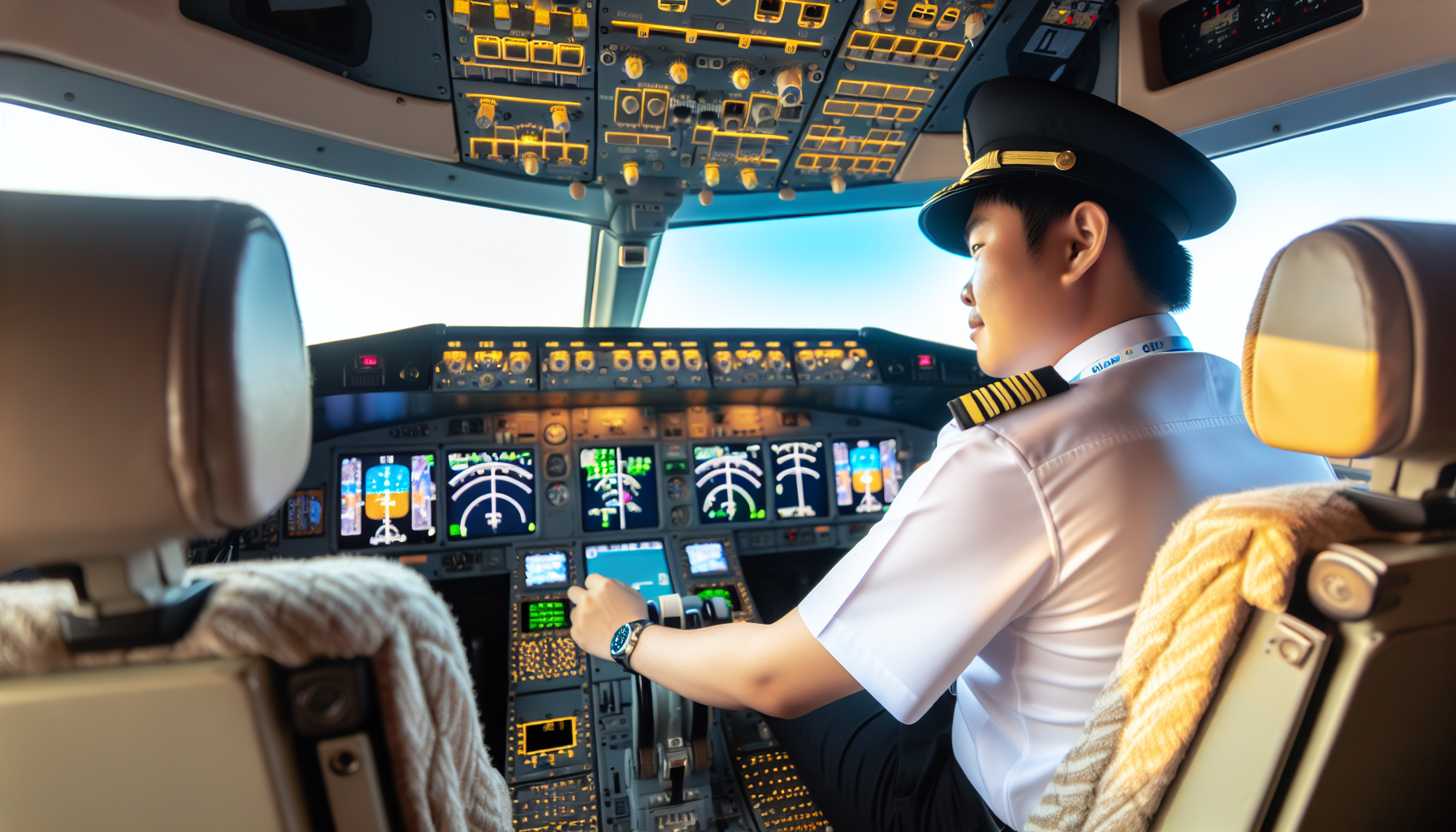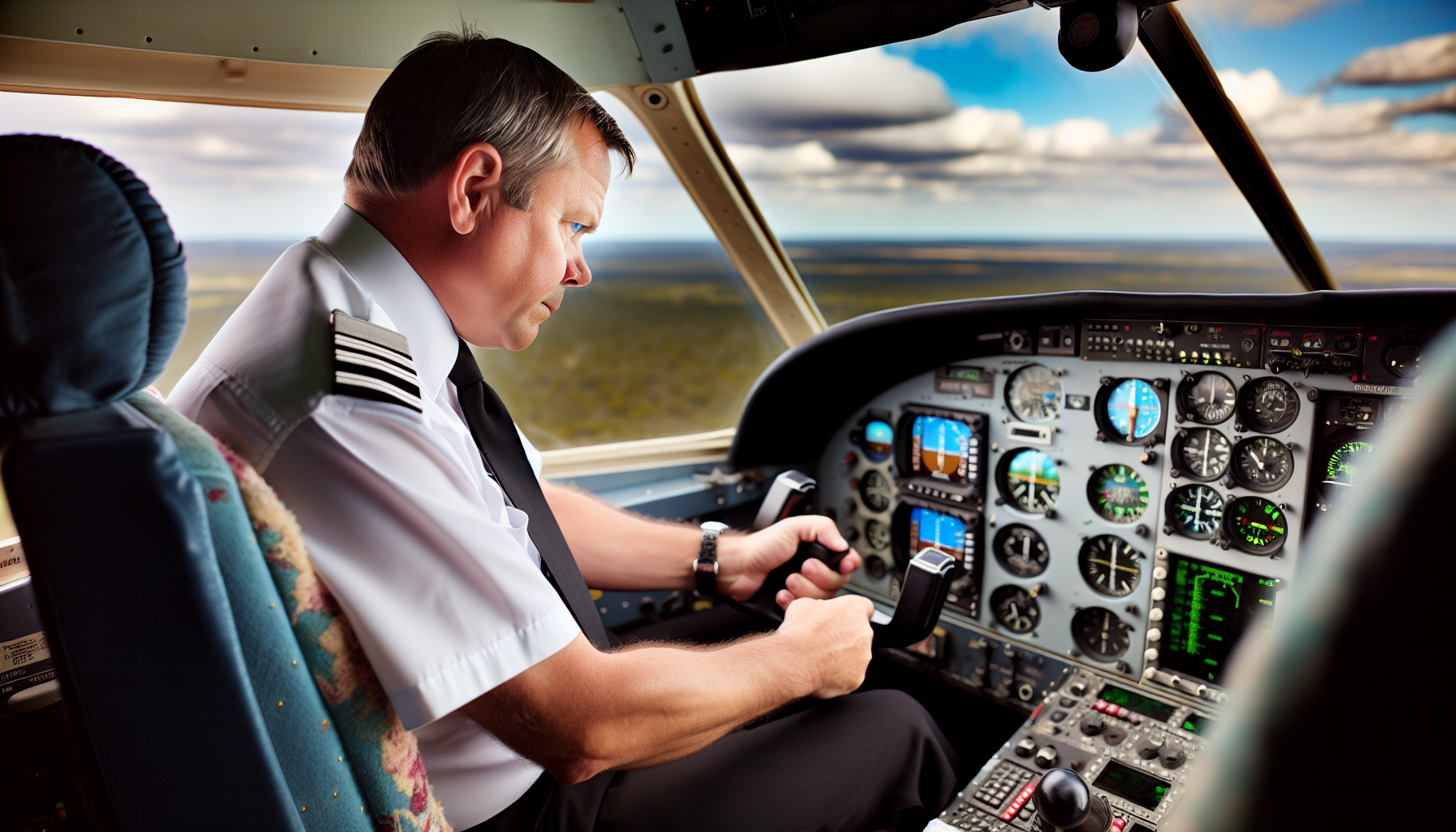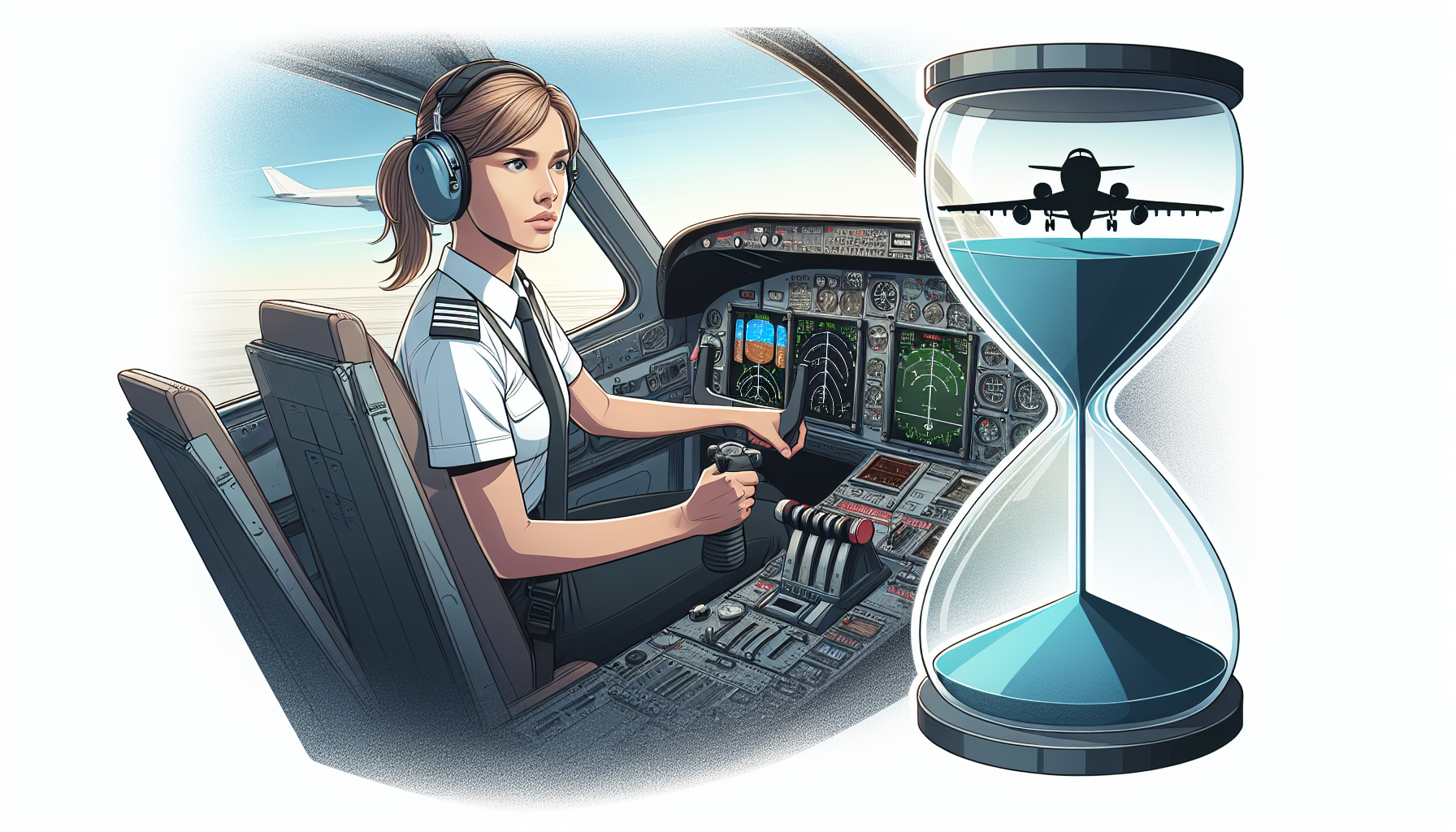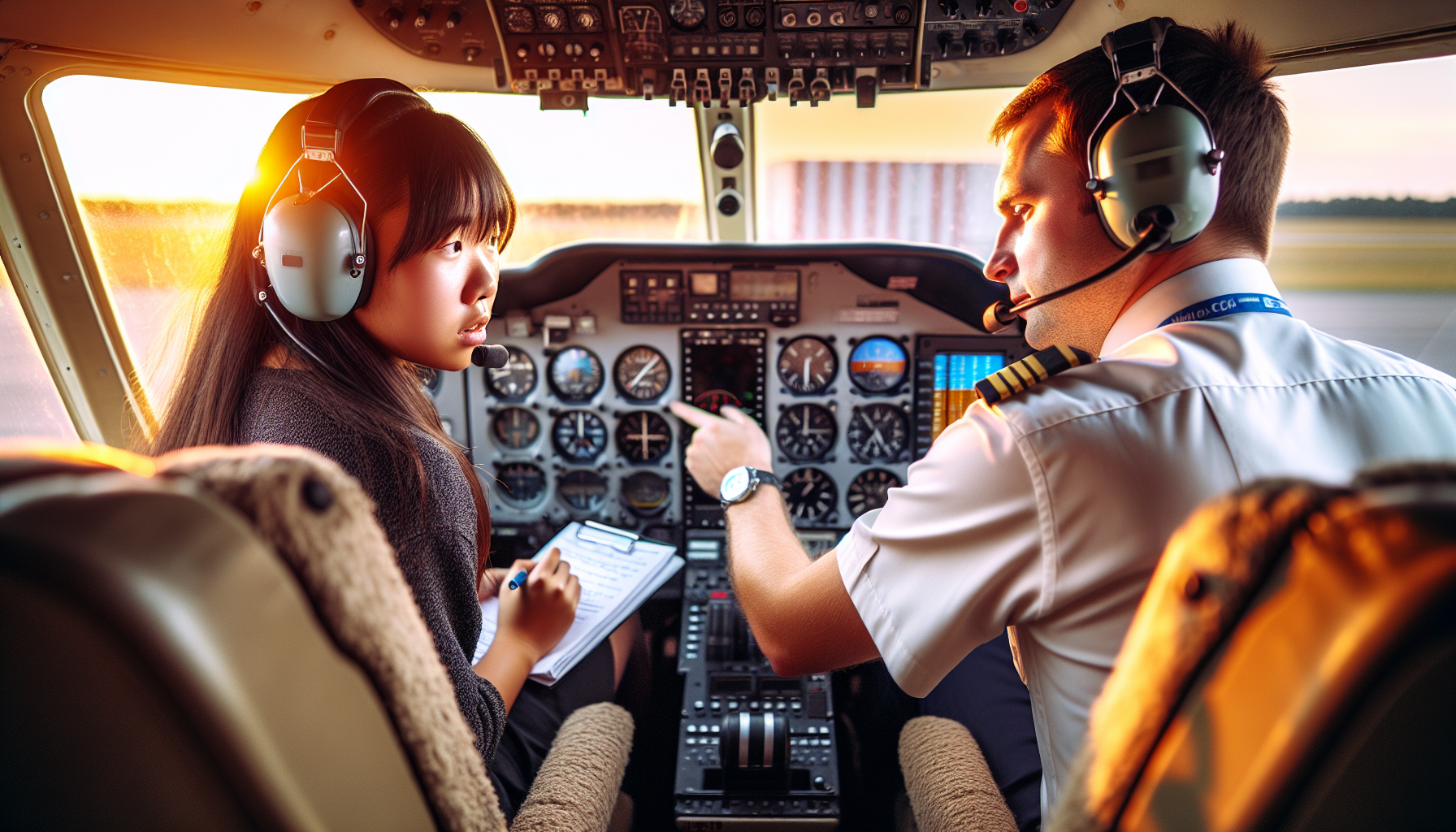Elevate Your Skills: Your Guide to Earning a Multi Engine Instrument Rating
Dec 24, 2023
In the world of aviation, a pilot’s skill set is a testament to their proficiency, versatility, and safety. One important cornerstone of this skill set is the multi engine instrument rating. This rating not only opens doors to flying aircraft with more than one engine but also paves the way for career advancement and broadens the scope of aircraft options. Whether you’re a commercial pilot aiming to scale the heights of your career or a private pilot seeking to amplify your flying experience, the multi engine instrument rating serves as a crucial stepping stone.
Key Takeaways
-
A multi engine instrument rating is essential for pilots looking to progress in their aviation journey.
-
Benefits include the ability to fly larger aircraft, increased salary prospects and improved safety.
-
Obtaining a multi engine instrument rating requires ground school training, flight lessons and preparation for the check ride.
The Importance of a Multi Engine Instrument Rating

Securing a multi engine instrument rating opens a multitude of opportunities in the aviation industry. It equips pilots with the ability to operate a multi-engine plane, even under instrument conditions – a feat not possible with a single-engine rating. This unique competency is not reserved for commercial pilots alone; private pilots who harbour ambitions of flying twin-engine aircraft can also acquire a multi engine rating.
Consider a pilot skilled in navigating a single-engine aircraft. You’re comfortable in your realm, yet something nudges you to explore beyond the familiar – to conquer the skies with more power, speed, and stability. That’s where multi engine training comes in, acting as your bridge to flying a multi engine airplane and advancing in your aviation journey.
Advantages for Commercial Pilots
For commercial pilots, a multi engine instrument rating offers numerous job opportunities and the capability to operate advanced aircraft. It’s a passport that allows them to:
-
Fly larger, more complex aircraft
-
Expand their career horizons
-
Explore a variety of roles, ranging from a commercial airline pilot to a certified flight instructor
Imagine being at the controls of a powerful plane with twin engines purring, navigating through the skies with precision and confidence. This is the reality for commercial pilots with a multi engine instrument rating. It equips them with the capacity to maneuver planes with more than one engine, even under reduced visibility conditions and at night, thereby offering a spectrum of training and career progression opportunities. Moreover, the rating opens the door to operating larger and more complex aircraft, such as commercial airliners, cargo planes, and corporate jets. And let’s not forget the potential it holds for better salary prospects, thanks to the higher-paid positions it can lead to.
Benefits for Private Pilots
From the perspective of a private pilot, the appeal of acquiring a multi engine instrument rating is also considerable. This coveted rating allows them to fly a larger variety of aircraft and transport more passengers. Imagine the joy of flying your loved ones on a holiday in a twin-engine aircraft, an experience that wouldn’t be possible with a single-engine rating!
But the advantages don’t stop at the sheer thrill of flying a multi engine plane or the capacity to carry additional passengers. Safety is another significant benefit that comes with this rating. With the heightened knowledge and proficiency in operating multi-engine aircraft and the ability to fly under instrument flight rules, private pilots are better equipped to manage complex aircraft systems and workload during critical phases of flight.
Prerequisites for Multi Engine Instrument Rating
You’re prepared to start the process of acquiring a multi engine instrument rating. But before you can dive into the world of multi engine training, there are a few prerequisites to meet. Think of these as your stepping stones to the multi engine instrument rating, each one playing a vital role in shaping the competent, multi engine pilot you aspire to be.
Primarily, you must possess a private pilot certificate. This certificate is your initial gateway to the world of aviation, a license that allows you to operate aircraft for personal use. Once you’ve secured your private pilot certificate, it’s time to obtain an instrument rating. This rating is your ticket to flying in various weather conditions, using only the aircraft’s instruments for navigation. With these two prerequisites under your belt, you’re ready to take on the challenge of multi engine training and earn your multi engine instrument rating.
Private Pilot Certificate
A private pilot certificate is the first rung on the ladder to your multi engine instrument rating. It’s the foundational certificate upon which all your advanced pilot certifications, including the commercial pilot certificate, and ratings will be built. But obtaining this certificate is not a walk in the park. It demands commitment, diligence, and a passion for flying.
To secure your private pilot certificate, you need to:
-
Hold either a student, sport, or recreational pilot certificate
-
Possess a third-class medical certificate
-
Complete an FAA-approved training course or program
-
Pass the FAA tests
The practical test, administered by the Federal Aviation Administration (FAA), is designed to evaluate your knowledge and proficiency in various aviation-related topics. Moreover, you must pass a physical exam and acquire a minimum of a third-class medical certificate. Each of these prerequisites ensures that you’re equipped with the knowledge and skills necessary to safely and effectively operate an aircraft.
Instrument Rating
With your private pilot certificate in hand, your next goal is to earn an instrument rating. This rating takes your flying capabilities a notch higher, allowing you to fly in adverse weather conditions and navigate using only the aircraft’s instruments. As the pilot in command, it’s like gaining a superpower that lets you conquer the skies, no matter the weather conditions.
Acquiring an instrument rating requires:
-
A private pilot certificate
-
Proficiency in English
-
Completion of a ground school training course
-
A certain number of logged flight hours
-
Passing both a practical and written test, which assesses your knowledge of instrument flying procedures, regulations, and navigation, as well as your ability to demonstrate instrument flying skills.
With an instrument rating, you’re not only enhancing your flying skills but also improving your decision-making abilities during flight, especially in challenging weather conditions.
Multi Engine Training Process

After fulfilling the prerequisites, you are prepared to initiate your multi engine training process. This training is like mastering a new language - one that requires understanding the intricacies of multi engine aircraft and honing your skills to fluently ‘speak’ this language in the sky. The multi engine training process involves three main components: ground school, flight lessons, and preparing for the check ride.
Ground school gives you a comprehensive understanding of multi engine aircraft, flight principles, and procedures. Flight lessons put this knowledge into practice, helping you master multi engine maneuvers and emergency procedures. And finally, preparing for the check ride ensures you’re ready to demonstrate your proficiency and secure your multi engine instrument rating.
Ground School
The multi engine rating does not require an FAA written exam. That being said, there is still theoretical knowledge to understand before sitting down in the pilot seat. Therefore, ground school is still an integral part of the multi engine rating.
Multi engine ground school is where you’ll learn the theory behind operating multi engine aircraft and understand the principles of flight. Think of it as your classroom-doorway to the skies, where you’ll get to grips with the basics of multi engine flying.
During ground school, you’ll cover a range of topics, including:
-
Aircraft systems and operations
-
Aerodynamics and flight principles
-
Navigation and flight planning
-
Emergency procedures and safety protocols
This knowledge forms the foundation of your multi engine training, preparing you for the practical aspects of flight training lessons.
Flight Lessons

Completion of ground school paves the way for flight lessons, the hands-on part of your multi engine training. This is where you’ll apply the knowledge you’ve gained in ground school, piloting a multi engine aircraft under the guidance of an experienced instructor.
During your flight lessons, you’ll practice multi engine maneuvers, emergency procedures, and instrument approaches. You’ll also learn how to handle the increased power, speed, and performance of multi engine aircraft. Each flight lesson is a stepping stone towards becoming a proficient multi engine pilot, preparing you for the final hurdle - the check ride.
Preparing for the Check Ride
The multi engine checkride marks the end of your multi engine training process. It’s your moment to shine, demonstrating the skills and knowledge you’ve gained throughout your training. But a successful check ride requires thorough preparation, reviewing all the material you’ve learned and practising maneuvers until they become second nature.
During your preparation, you’ll need to practice various maneuvers, including steep turns, stalls, slow flight, and instrument approaches. You’ll also need to demonstrate proficiency in emergency procedures, such as engine failure and loss of instruments. By diligently preparing for your check ride, you’ll be well-equipped to demonstrate your proficiency and secure your multi engine instrument rating.
Accelerated Programs and Costs

If you’re keen on quickly acquiring a multi engine instrument rating, accelerated programs provide a speedy alternative. These programs condense the training into a shorter timeframe, allowing you to complete your training often within a week. However, expedited training comes with its own set of costs, which can vary based on the flight school and location.
The cost of obtaining a multi engine instrument rating includes aircraft rental, instructor fees, and FAA examiner fees. While the cost can vary greatly, it’s important to remember that investing in your multi engine instrument rating is investing in your future as a pilot, opening doors to a multitude of opportunities and experiences.
Accelerated Program Benefits
Accelerated programs for obtaining a multi engine instrument rating offer a range of benefits. Most notably, they allow you to complete your training in a shorter timeframe, often within a week. This means that you can start flying multi engine aircraft sooner, helping you to advance in your aviation career or enjoy flying a wider range of aircraft as a private pilot.
Another advantage of accelerated programs is the intensive learning experience they offer. Unlike traditional training programs, which often spread the training over several months, accelerated programs immerse you in the training, allowing you to focus solely on your multi engine training for a short period. This intensive learning experience can help to reinforce the material and skills you learn, helping you to become a proficient multi engine pilot quicker.
Cost Breakdown
Understanding the costs associated with obtaining a multi engine instrument rating can help you to budget and plan for your training. The cost of obtaining a multi engine instrument rating can vary greatly, depending on factors such as:
-
the flight school
-
location
-
type of aircraft
-
number of flight hours required
-
additional training materials or resources
By researching and comparing different options, you can get a better idea of the potential costs involved and make an informed decision about your training.
The cost of aircraft rental for multi engine instrument rating training can range from around $99 per hour for a 2-seat Cessna to up to $300 per hour for a Cirrus SR22. Instructor fees typically average around $40 per hour for ground instruction. And FAA examiner fees can also vary, with total costs estimated to be between $2000 and $6000. By understanding these costs, you can make an informed decision about your multi engine instrument rating training.
Choosing the Right Flight School

Selecting a suitable flight school for your multi engine instrument rating training is a significant part of your journey. The flight school you choose will not only provide the training you need to earn your rating but also shape your experience and knowledge as a multi engine pilot.
When selecting a flight school, consider the following factors:
-
The number of aircraft and instructors available
-
The cost of renting the aircraft
-
The duration of the flight school program
-
The reputation and experience of the flight school
-
The location of the flight school, as this can influence the types of aircraft available for training and the training environments you’ll experience.
Location and Facilities
The location and facilities of a flight school can greatly impact your multi engine training experience. A flight school that has access to a variety of multi engine aircraft and sophisticated flight simulators can provide a more comprehensive and practical training experience.
Flight schools located in areas with diverse terrain and weather conditions can offer more comprehensive training experiences, including single engine instrument approach. Additionally, the proximity of the flight school to airports with instrument approaches and controlled airspace can enhance the instrument training component of your multi engine training. By considering the location and facilities of the flight school, you can ensure you receive the best possible training for your multi engine instrument rating.
Reputation and Instructors
The reputation of a flight school and the expertise of their instructors can significantly affect the quality of your multi engine instrument rating training. A reputable flight school is more likely to have knowledgeable instructors, up-to-date training materials, and a comprehensive curriculum, all of which contribute to a superior training experience.
When checking a flight school’s reputation, consider its accreditation, location, cost, quality of instructors, safety record, and feedback from past students. Similarly, when assessing the qualifications of flight instructors, consider their certification, prior experience, attention to detail, and teaching skills.
By thoroughly researching the reputation and instructors of a flight school, you can ensure you receive the high-quality training necessary for your multi engine instrument rating.
Summary
In the realm of aviation, a multi engine instrument rating is a valuable asset, enabling pilots to operate a wider range of aircraft and providing a pathway for career advancement. Whether you’re a commercial pilot looking to expand your job opportunities or a private pilot aiming to enhance your flying experience, a multi engine instrument rating is a worthy investment.
However, earning this coveted rating requires a commitment to learning, from understanding the importance of the rating and meeting the prerequisites to navigating the multi engine training process and choosing the right flight school. Remember, the journey to earning a multi engine instrument rating is not a race, but a journey of learning and growth. So take your time, enjoy the process, and before you know it, you’ll be soaring through the skies with the added power, speed, and stability of multi engine aircraft.
Frequently Asked Questions
Do you need instrument rating for multi engine?
Technically no. But it's a lot easier to get your instrument rating before getting a multi engine rating. If you do, the instrument rating will be applied to your multi engine rating as soon as you receive your multi engine. If you get the multi engine first, you'll have to do more work to get the instrument rating applied to your multi engine rating.
Is a multi engine rating worth it?
A multi-engine rating is worth it if you plan to fly in areas where single engine aircraft aren't recommended, as it allows for an additional safety measure in case of emergency. Moreover, it could be beneficial if your flight plan takes you over terrain where an emergency landing would be difficult or impossible.
What are the requirements for multi engine IFR?
To obtain a Multi Engine Instrument Rating, the minimum requirements are 40 hours of instrument time, a dual cross-country of at least 100 nautical miles under simulated or actual IFR conditions, and completion of the necessary prerequisites.
What is a multi engine instructor rating?
A Multi Engine Instructor Rating enables Flight Instructors to teach in multi-engine airplanes by meeting the requirements of the FAA, which include having at least 5 hours of Pilot in Command (PIC) time in a particular make and model.
What is multi engine rating?
A Multi Engine Rating is a pilot rating that enables a qualified pilot to command any aircraft with multiple engines, providing them with increased performance capability and power. This add-on certification is essential for pilots aspiring to fly for airlines or increase their marketability in the aviation industry.
